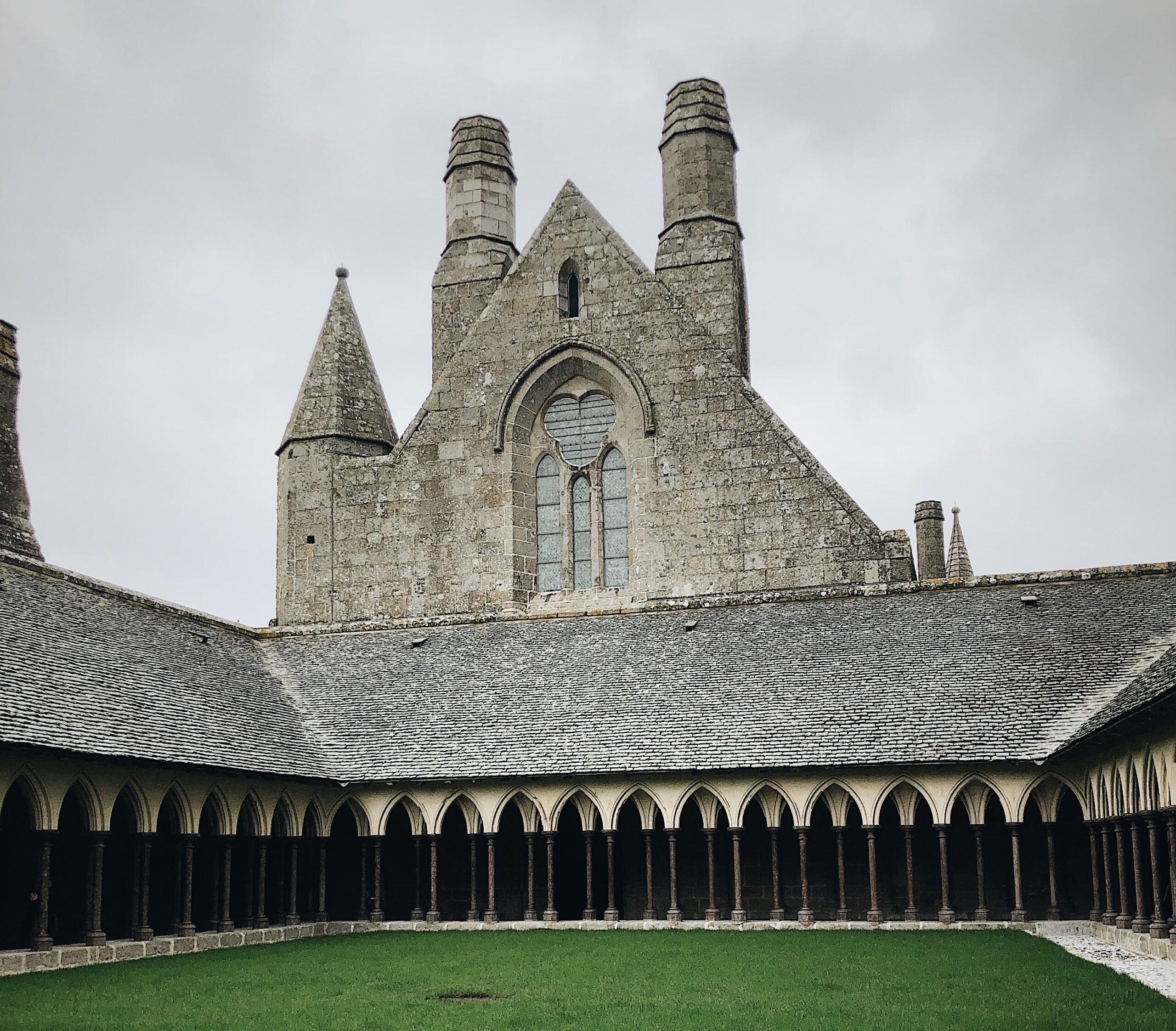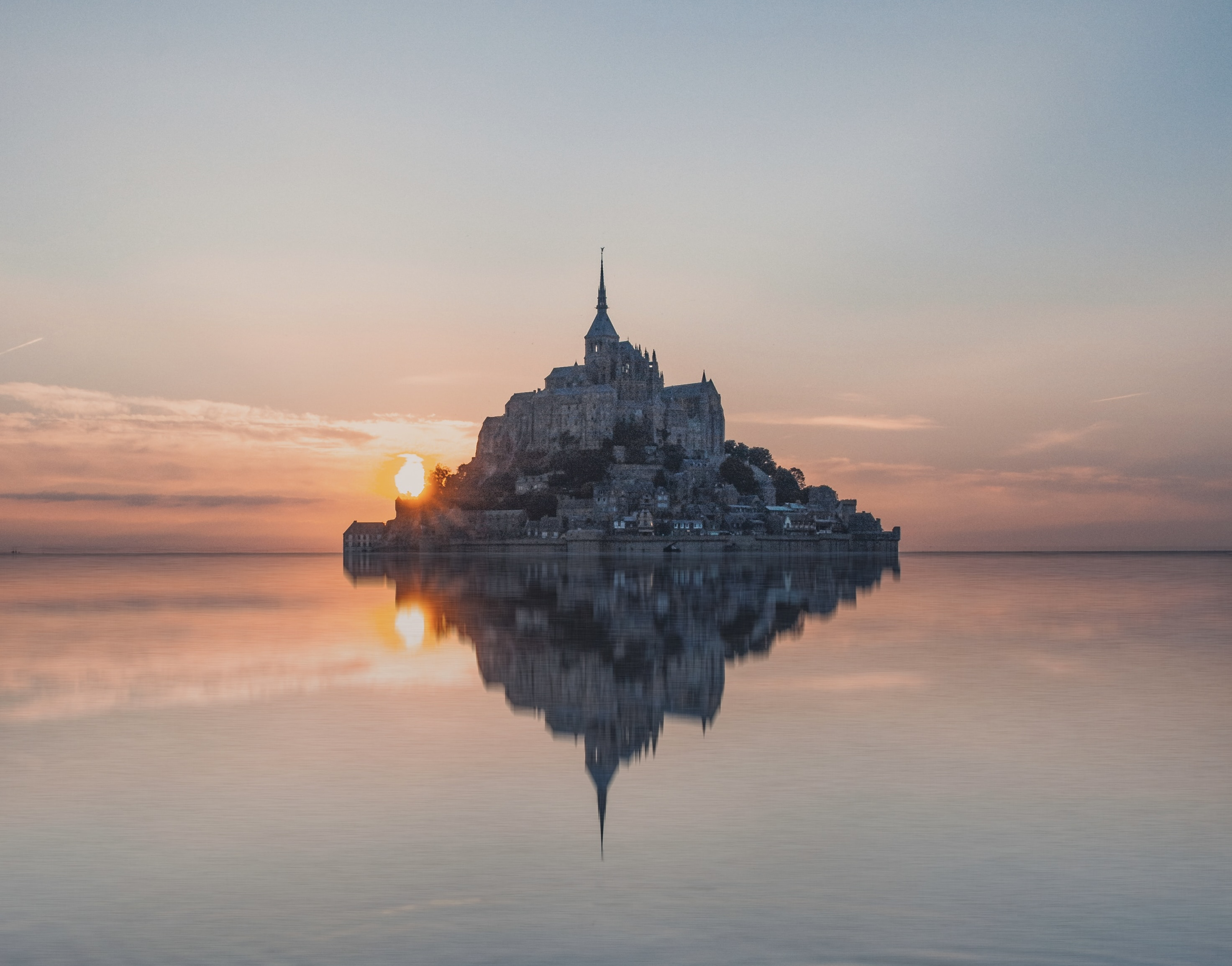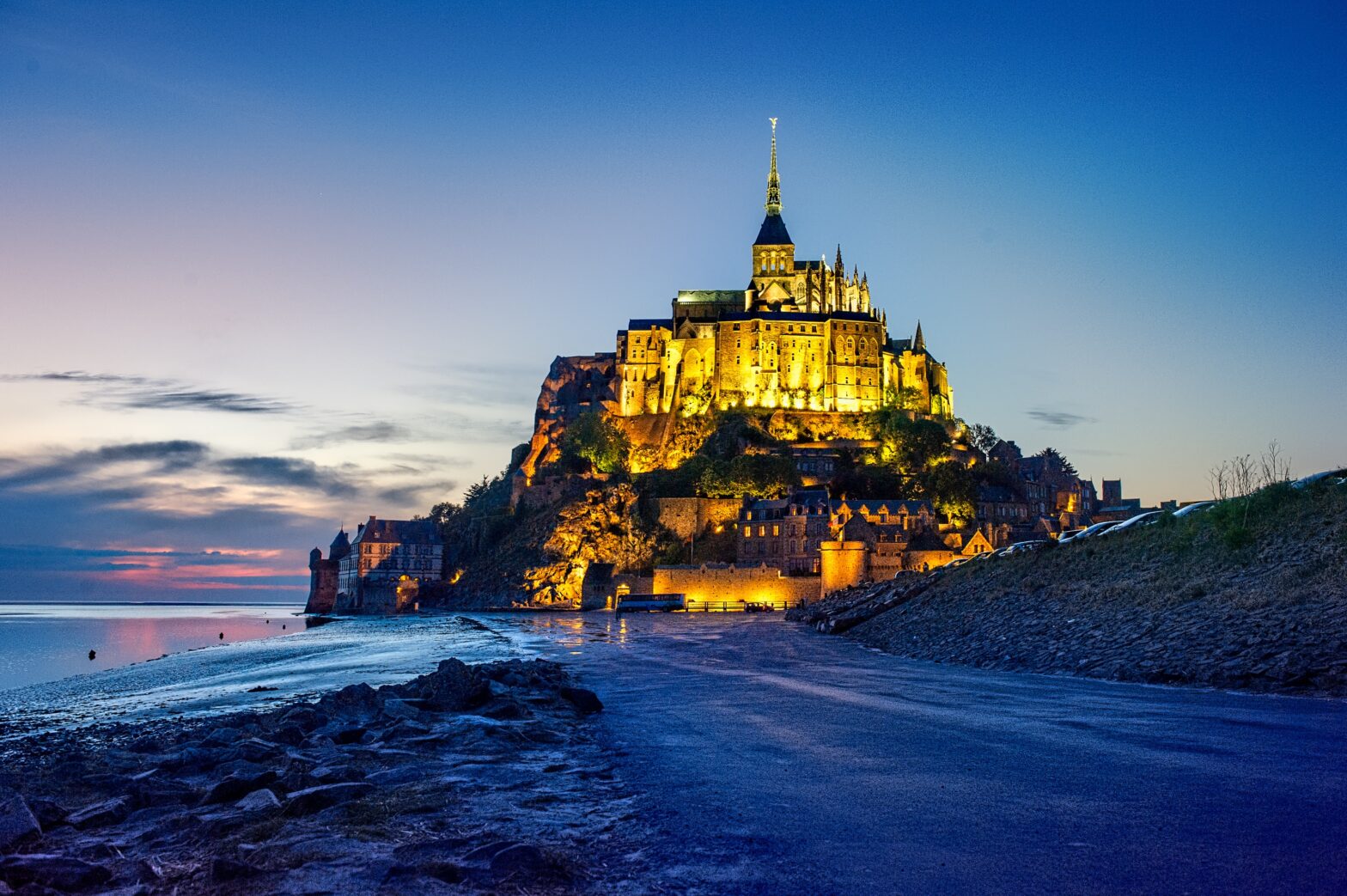Mont-Saint-Michel is a tidal island in Normandy that lies almost a mile from the northwestern coast of France. The striking islet towers over the surrounding bay and when viewed from afar, seemingly materializes from nothing. The island sits at the mouth of the Couesnon River and has a peak that can be seen from miles away. Atop the islet is a gravity-defying abbey whose tall walls keep its village safe from rising tidal waters. Mont-Saint-Michel is nearly completely cut off from mainland Paris and is only linked by a bridge named Pont Passerelle.
Once travelers pass through the bay around Mont-Saint-Michel, named Couesnon estuary, and cross the Porte du Boulevard, they will see the picturesque town of Mont-Saint-Michel (which is the name of both the tidal island and commune). The town has about 50 inhabitants, many of which are monks and nuns. The cobblestone streets are filled with museums, shops, chapels, and places to eat. La Mère Poulard is a famous omelet spot that has been in the village since 1888, so tourists commonly visit it for a taste of the local cuisine. Exploring Mont-Saint-Michel entails a bit of walking since there are many steep pathways (so travelers should bring good walking shoes), but many travelers welcome the chance to reach the top of the Abbey.
The island is commonly referred to as magical. Around 3.5 million travelers make the journey every year to enjoy the French attraction that has both cultural and geographical significance. Disney fans might even catch the striking resemblance of the mont and the royal castle in the animated film “Tangled,” since the animation is based off of Mont-Saint-Michel.
How To Get to Mont-Saint-Michel

There are many options for transportation travelers can utilize to get to Mont-Saint-Michel. To get there from other areas, it is recommended that travelers take the train or a guided tour which would include transportation. From Paris, Mont-Saint-Michel is a nearly four hour car ride, since it is 225 miles away. Travelers coming from the capital city are best off taking the train, which cuts the commute down to nearly three hours and they will not have to worry about high ride share costs or trying to navigate driving in a foreign country. After riding from Paris’ Gare Montparnasse to Rennes by train, travelers should catch a bus to Mont-Saint-Michel. From the dedicated parking lot on the mainland, travelers will have to walk to Place des Navettes to catch a shuttle or walk the rest of the way.
Visitors who are staying close to Mont-Saint-Michel and its bay (on the mainland) can get to it by car, bike, bus, or ferry. The main shuttle bus, called Le Passeur, runs throughout the day and is free, but there are many options for travelers if they prefer more private transportation. Many ferry terminals service the area, but the Condor, Brittany and Granville terminals are the most popular during high tide (only when it is safe). Getting to Place des Navettes is relatively inexpensive depending on the preferred mode of transportation and how close the traveler’s accommodations are. Once there, if visiting during low tide, walking tours can be a great interactive option for travelers. Travelers can also walk across the causeway, Pont Passerelle, which connects the mainland to the island.
Unforgettable Facts About Mont-Saint-Michel

The Origin of the Island’s Name
Mont-Saint-Michel has a Gothic style and was built between the 11th and 16th centuries. It was erected on a sanctuary that was dedicated to the archangel Michel (by the Benedictines), so the Romanesque period and the church have heavy influences on the construction of the community and the abbey church which rests at the top of the mount. According to the tradition of places dedicated to Saint Michel, Mont-Saint-Michel was the perfect location due to how it is hard to access.
The Mont Is a UNESCO World Heritage Site
In 1972, the mont became a UNESCO site due to its remarkable architecture and cultural influence. The site has even become a signifier of French national identity because of its historical significance. The island remained protected from English conquerors, unlike the rest of Normandy, due to its fortified location. The water-locked and sandy island was also naturally protected from attackers, so it was relatively impenetrable. Since then, the island has been considered an undefeated fortress and a symbol of French strength and pride.
Inconsistent Tides and the Best Time To Visit

Technically, the islet of Mont-Saint-Michel rarely appears to be one, due to the tides. The tide changes are so extreme that during low tide it appears that no water is in the bay. This period of low tide is appealing to travelers who prefer to be able to walk around the surrounding area to see the sandbanks. There are even guided walking tours available that offer visitors unique vantage points and experiences.
During high tide season, travelers should be careful while exploring the grounds since the tide can rush in suddenly and even drown people if they are not careful. To ensure the safety of visitors, there are tide forecasts and police that patrol the area on boats during high tide. Boat rides through the bay are common, except during the highest tide which occurs a few times a year. With a tidal range of almost 50 feet (between high and low tide), Mont-Saint-Michel has the highest tides in continental Europe.

The temperatures of the island are critical to the experience that travelers have while visiting. From June to August travelers will experience the most appealing weather. Normandy has warm weather during the summer months (around 70 degrees Fahrenheit), which is significant since the region is commonly cloudy and chilly. With an average temperature that spans from 35 to 70 degrees Fahrenheit throughout the year, visitors should plan accordingly so they can enjoy their time there. Most travelers visit Mont-Saint-Michel between May and September, although it is a bit cooler.
